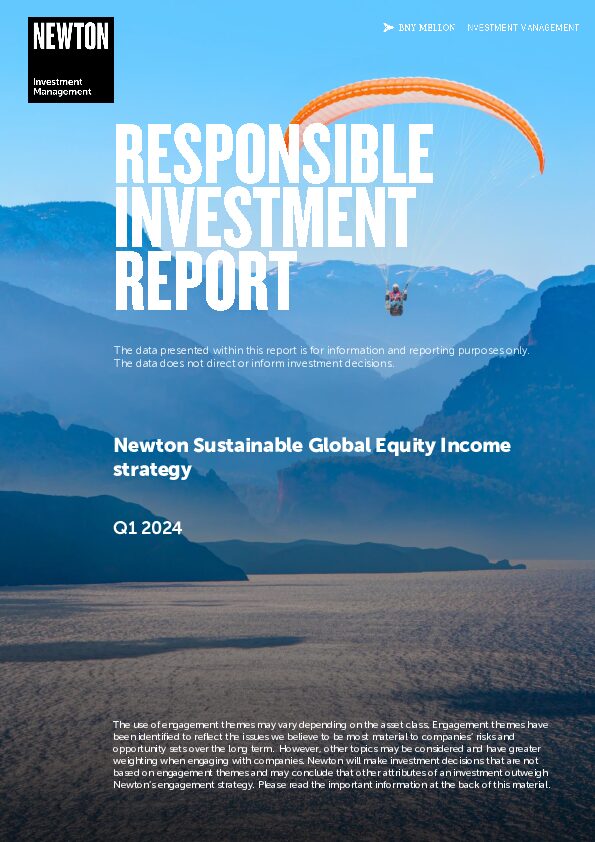Strategy profile
-
Objective
-
The strategy seeks to achieve income together with the potential for capital growth over the long term (5 years or more).
-
Performance benchmark
- FTSE W World Index
-
Typical number of equity holdings
- 70 or fewer
-
Yield discipline
-
Every new holding in a sustainable global equity income portfolio typically has a prospective yield 25% greater than the benchmark at the point of purchase. Any holding whose prospective yield falls below the benchmark yield will trigger our sale discipline process.
-
Red lines
- Our ‘red lines’ are built on a combination of exclusions that effectively avoid investments in security issuers involved in or that generate a material proportion of revenues from areas of activity that we deem to be harmful from a social and/or environmental perspective.
-
Literature
-
Application form
Key Investor Information Document (KIID)
Prospectus
Investment team
-
- Our Sustainable Global Equity Income strategy is managed by an experienced team. In-house research analysts are at the core of our investment process, and our multidimensional research platform spans fundamental, thematic, responsible investment, quantitative, geopolitical, investigative and private-market research to promote better-informed investment decisions.
Want to find out more?
Your capital may be at risk. The value of investments and the income from them can fall as well as rise and investors may not get back the original amount invested.
Newton will make investment decisions that are not based solely on ESG criteria. Other attributes of an investment may outweigh ESG analysis when making investment decisions. The way that ESG and sustainability criteria are assessed and the evaluation of their suitability for Newton’s sustainable strategies may vary depending on the asset class and strategy involved. For Newton’s sustainable strategies, ESG analysis is performed prior to investment for corporate investments (single name equity and fixed-income securities). The analysis will then also follow the Newton sustainable investment process to ensure it fits with the wider Newton sustainable investment philosophy.




